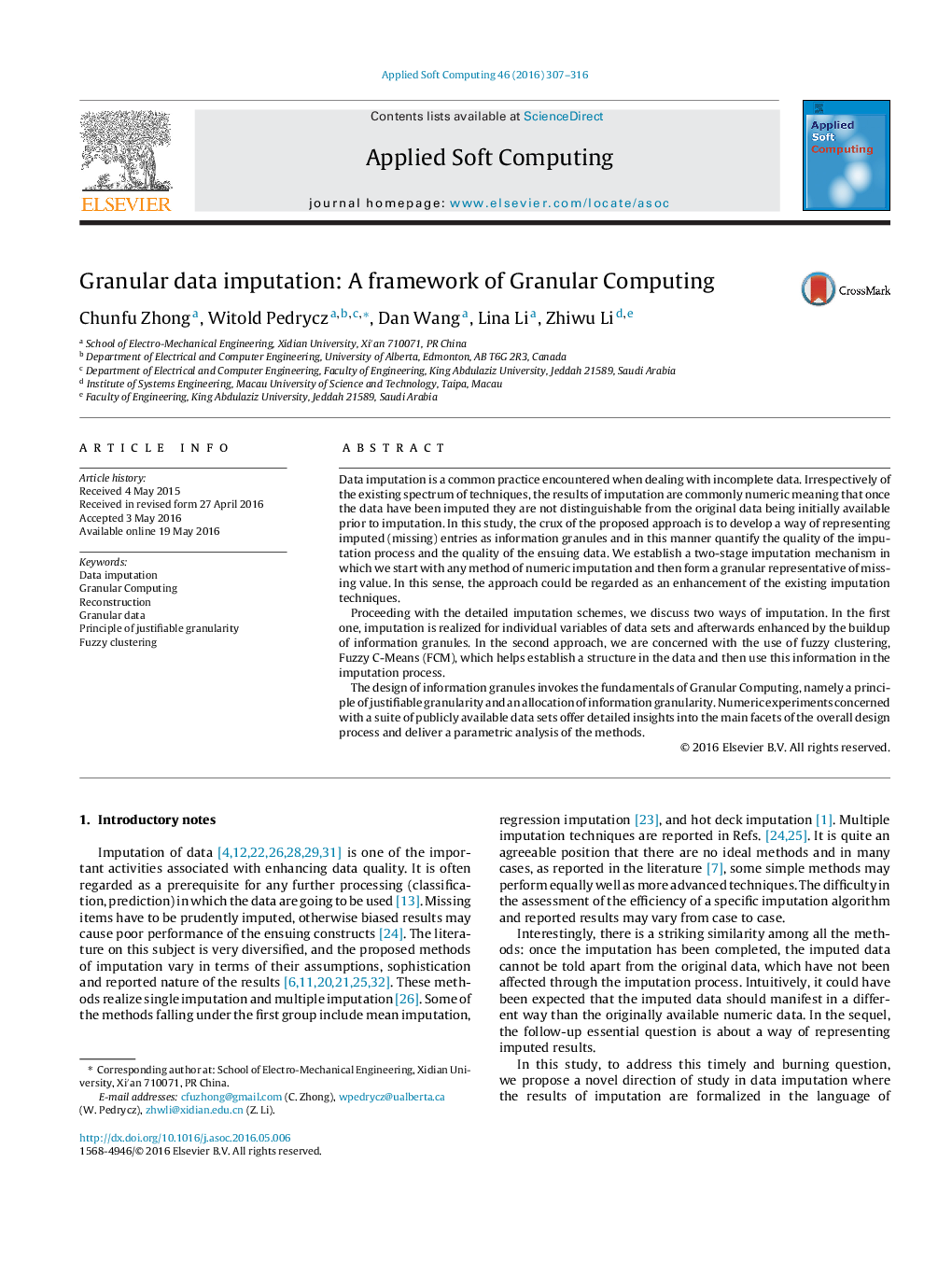| Article ID | Journal | Published Year | Pages | File Type |
|---|---|---|---|---|
| 494673 | Applied Soft Computing | 2016 | 10 Pages |
•Data imputation is realized with the use of fuzzy clustering.•Data imputation leads to information granules rather than numeric entries.•Information granules help quantify the quality of imputation.•The use of granular imputation is shown in system modeling.
Data imputation is a common practice encountered when dealing with incomplete data. Irrespectively of the existing spectrum of techniques, the results of imputation are commonly numeric meaning that once the data have been imputed they are not distinguishable from the original data being initially available prior to imputation. In this study, the crux of the proposed approach is to develop a way of representing imputed (missing) entries as information granules and in this manner quantify the quality of the imputation process and the quality of the ensuing data. We establish a two-stage imputation mechanism in which we start with any method of numeric imputation and then form a granular representative of missing value. In this sense, the approach could be regarded as an enhancement of the existing imputation techniques.Proceeding with the detailed imputation schemes, we discuss two ways of imputation. In the first one, imputation is realized for individual variables of data sets and afterwards enhanced by the buildup of information granules. In the second approach, we are concerned with the use of fuzzy clustering, Fuzzy C-Means (FCM), which helps establish a structure in the data and then use this information in the imputation process.The design of information granules invokes the fundamentals of Granular Computing, namely a principle of justifiable granularity and an allocation of information granularity. Numeric experiments concerned with a suite of publicly available data sets offer detailed insights into the main facets of the overall design process and deliver a parametric analysis of the methods.
Graphical abstractFigure optionsDownload full-size imageDownload as PowerPoint slide
